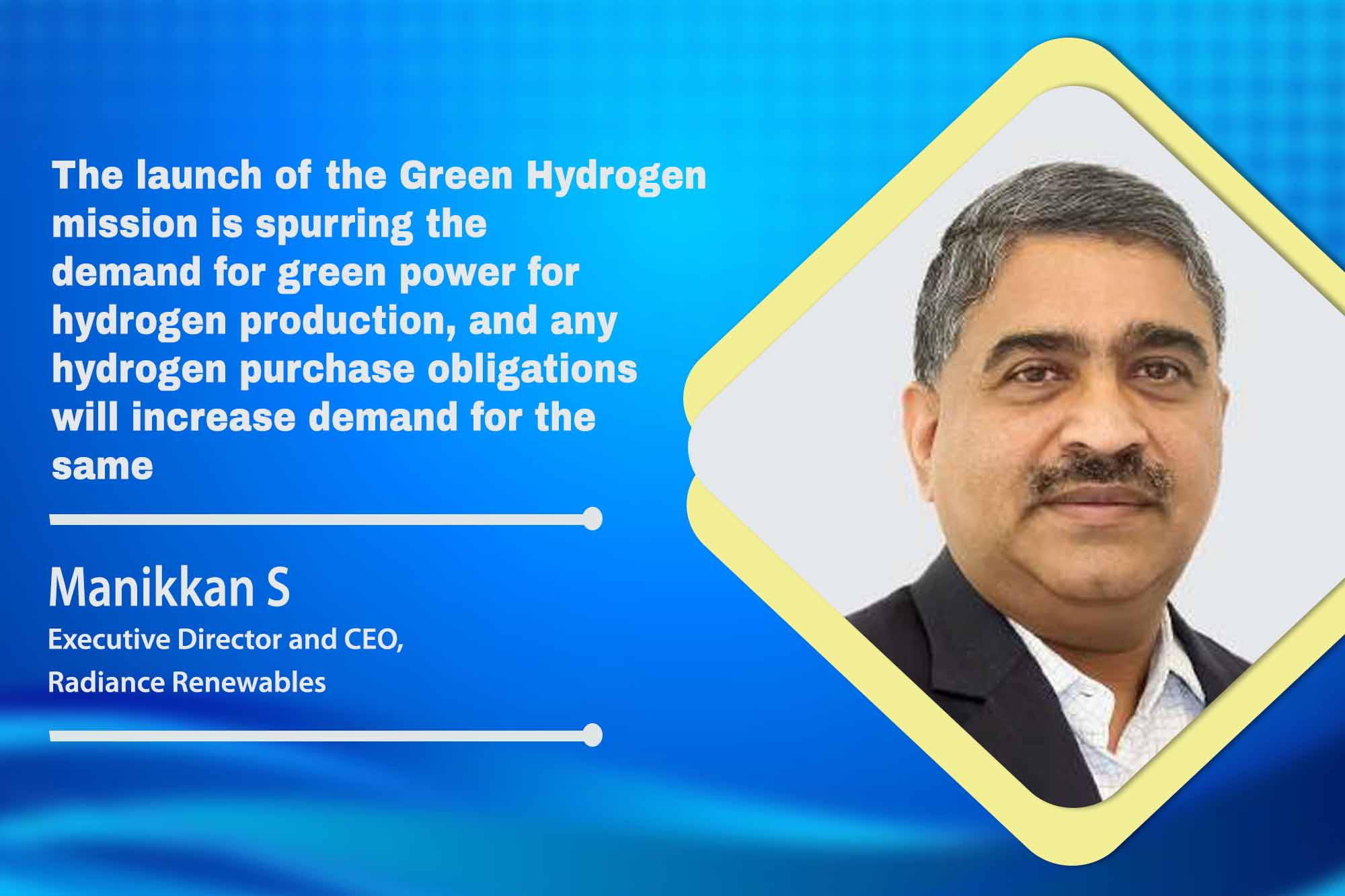Tech and policy boost fuel surge in renewable energy investments
By EPR Magazine Editorial March 22, 2024 7:02 pm IST
By EPR Magazine Editorial March 22, 2024 7:02 pm IST

The launch of the Green Hydrogen mission is spurring the demand for green power for hydrogen production, and any hydrogen purchase obligations will increase demand for the same.
Government initiatives like Green Energy Open Access and General Network Access rules aim to boost green energy adoption, with incentives for both commercial consumers and large interstate projects. Manikkan S further shares his views on the industry’s latest trends with EPR Magazine.
How do recent tech advancements affect the feasibility and scalability of renewable energy integration, and how do we tackle intermittency?
Implementing trackers enhances solar panel efficiency by following the sun’s path, while robotic cleaning reduces water usage and boosts generation. Co-locating wind and solar projects optimise infrastructure usage, increasing the renewable energy (RE) mix. Integrating storage like BESS and PSH smooths peak demands. Reactive power management maintains the power factor near unity, improving overall system efficiency and stability.
A great deal of effort is being put into improving forecasting and scheduling renewable energy to support grid stability given the implementation of Deviation Settlement Mechanism (DSM) in most states. Intermittency issues are also addressed instantly by integrating BESS solutions.
What policies and incentives drive investments in renewable energy adoption, and how effective are they?
The government’s progressive policies, such as the roll-out of the Green Energy Open Access rules across multiple states, are boosting significant adoption of green energy through open access for commercial and industrial customers with a minimum of 100 KVA demand (the de-minimis eligibility criteria earlier was 1 MVA contract demand). Implementing General Network Access (GNA) rules for CTU-connected projects has given a fillip to the green energy supply of the Interstate transmission system (ISTS). Further, the progressively declining waiver of transmission charges for projects commissioned before June 2025 and up to June 2028 will accelerate large ISTS-based CTU projects while also providing bulk consumers in Eastern India with poor renewable resources to benefit from the supply of power at competitive tariffs from projects located in resource-rich states using ISTS.The launch of the Green Hydrogen mission is spurring the demand for green power for hydrogen production, and any hydrogen purchase obligations will increase demand for the same. The monthly banking rules for renewable power in various states are also a positive for Intra-state projects. The Government’s latest subsidy programme for rooftop projects spurs the growth of residential solar capacity.
How can the environmental footprint of RE infrastructure be minimised, and what efforts are being made toward sustainability?
As we scale up renewable energy generating capabilities to meet the nation’s net-zero targets, we must know how these systems interact with the natural environment. Prima facie clean energy is considered better for the environment than traditional conventional–fuel–based resources, resulting in less air and water pollution than combustible fossil fuels, such as coal, natural gas, and petroleum oil. Despite these benefits, clean energy technologies can have environmental consequences before, during, and after their useful lifespans, for example, GHG emissions caused during disposal of broken or end-of-life solar PV modules, damage caused to critical floral or fauna habitat during project development and operation, disruption caused to bird movement and migration.
To ensure the sustainability of renewable energy infrastructure projects, effective mitigating measures include minimising damage to biodiversity by siting projects away from eco-sensitive areas, conducting thorough environmental and social impact assessments, and conducting specialised studies at the project’s inception to evaluate and address potential impacts. Reducing embodied energy and carbon in purchased projects and services, recycling e-waste, minimising freshwater use through technological solutions, and continuously monitoring and improving mitigating measures throughout the project’s lifespan is also crucial. These measures collectively enhance the project’s sustainability while preserving the surrounding environment, ensuring long-term viability and minimising adverse effects on ecosystems.
Spokesperson: Manikkan S, Executive Director and CEO- Radiance Renewables
We use cookies to personalize your experience. By continuing to visit this website you agree to our Terms & Conditions, Privacy Policy and Cookie Policy.